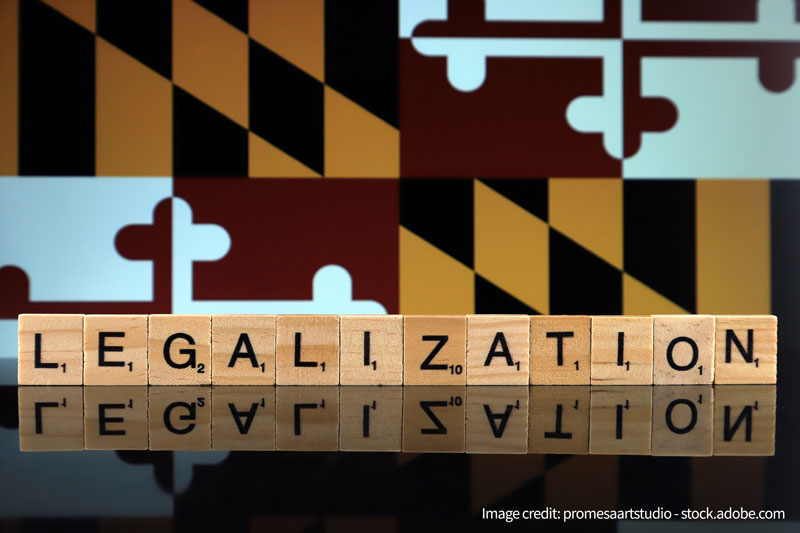Data can mean different things to different stakeholders. In the state of Maryland, the data following its first month of recreational cannabis legalization told a few different stories.
Recreational marijuana became legal in Maryland on July 1st, and on that date about 100 stores that were licensed to sell medicinal marijuana could also now sell it recreationally. The timing with the 4th of July weekend provided a benchmark that the Maryland Cannabis Administration used to compare sales from 2022 and 2023. In 2022, the state saw just under $4 million in medicinal marijuana sales. In 2023, after the legalization of recreational adult use, the combined number from medicinal and recreational was more than $10 million.
Cannabis products in Maryland are subject to a 9% sales tax, the same as the state’s tax on alcohol. But there is more to the data than solely revenue.

The surrounding area
Maryland is unique in its region when it comes to cannabis legalization. Most of its borders touch states where medical marijuana is legal, but recreational cannabis usage is not. That’s the case in West Virginia, and also in Pennsylvania, which makes up most of the northern border of Maryland. Because marijuana is not legalized at a federal level, it is illegal to bring the product across state lines. All that is needed to purchase cannabis in Maryland, though, is a legal ID, so the state has seen an influx of customers from out of state.
Delaware is another source of consumers. Delaware has legalized recreational marijuana, but it has not yet allowed for the opening of recreational-use dispensaries. It could be a couple of years until the law allows for dispensaries, so in the meantime Maryland is reaping the benefits.
Data’s role in Maryland’s approach
Maryland businesses used data to predict what turnout might look like in that first month and to make sure they had enough inventory. Some business owners see a pattern when a state first legalizes marijuana where new consumers try out a variety of strains in their first visits to a dispensary before deciding what they enjoy.
After the law was passed in Maryland, established businesses that have had success in other states used the information they gathered elsewhere to help guide decisions in the new marketplace. The right analytics solution can make those decisions easier, providing data about which products sell better in which regions. In Maryland, different areas of the state have seen varying popularity of certain products.
The analytics technology could also be focused on regulatory practices. In Maryland, businesses are restricted in how they can market cannabis products, and there are also still certain products or services that are exclusive to medical patients.
Social justice and equity
Maryland moved fast to allow businesses to sell marijuana recreationally, which hasn’t been the case in every state that has passed laws legalizing the drug. That includes another one of Maryland’s neighbors, Virginia, where people can possess or grow cannabis, but it is not yet legal to buy or sell marijuana.
The quick turnaround in Maryland, though, has revealed a data point that the state is now working to address. Data being used to evaluate who has licenses to sell marijuana in Maryland shows that minority business owners are underrepresented after the first round of recreational use legalization.
When medical marijuana licenses were given out in Maryland in 2016, none were awarded to Black businesses. The medical marijuana licensees were the first group to be given the opportunity to sell recreational-use. By January 1st, a round of new licenses will be issued and the state is working to meet its social justice and equity goals by then.
No one expects Maryland to maintain the pace it came out of the gate with in its first month of legalization. In fact, the landscape in a year could be very different. The regulations in effect in Maryland right now will expire after twelve months. Regulators have until June 30, 2024 to put into effect any changes they decide are necessary. When they make their decisions, or businesses make a case against a change, you can be sure both sides will be using data to support their arguments.

- Analyzing the Challenges of Pharmaceutical Supply Shortages - April 26, 2024
- Summer is an Opportunity for Digital Transformation in Education - April 17, 2024
- Your Car is Tracking More than Miles per Hour - April 11, 2024



